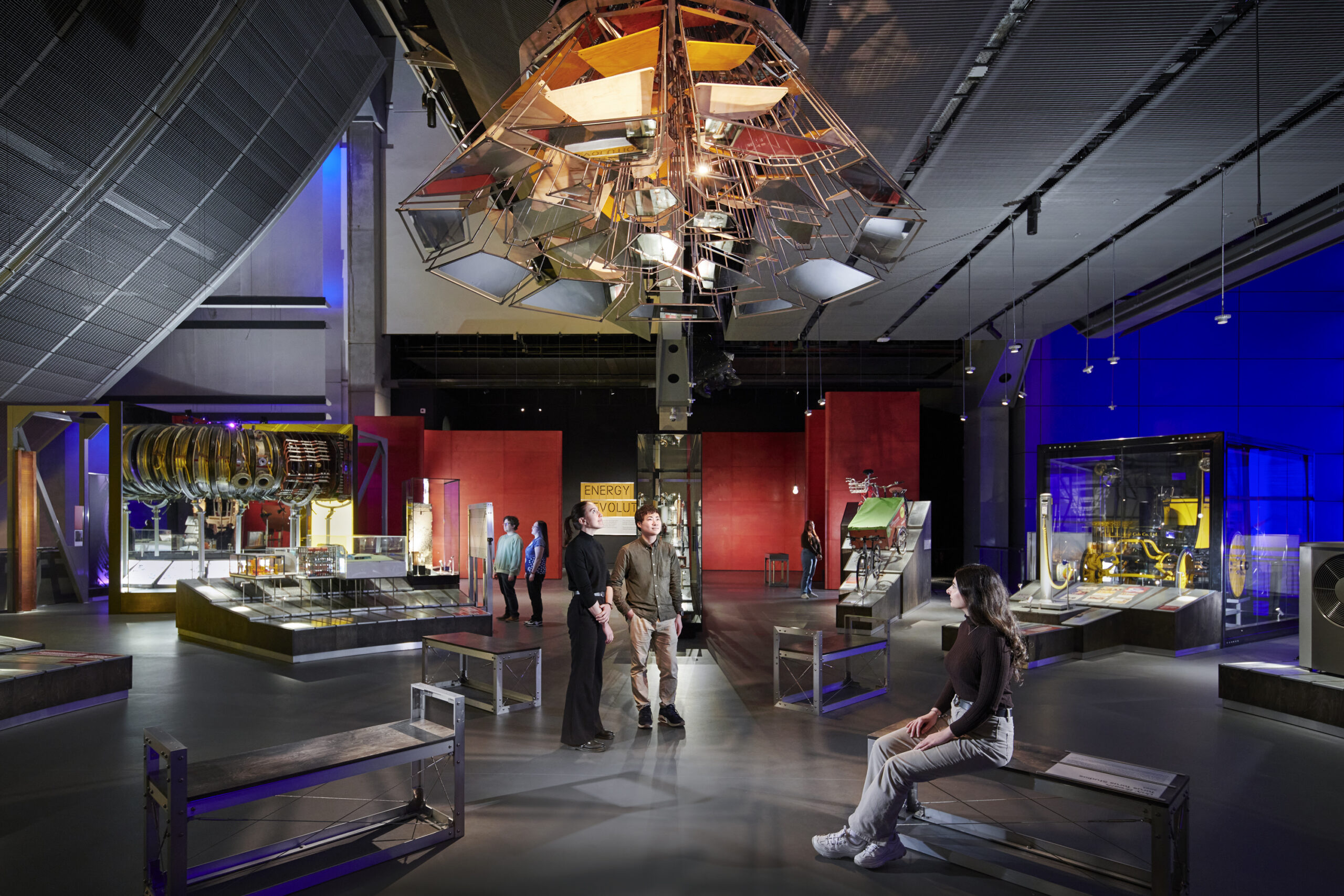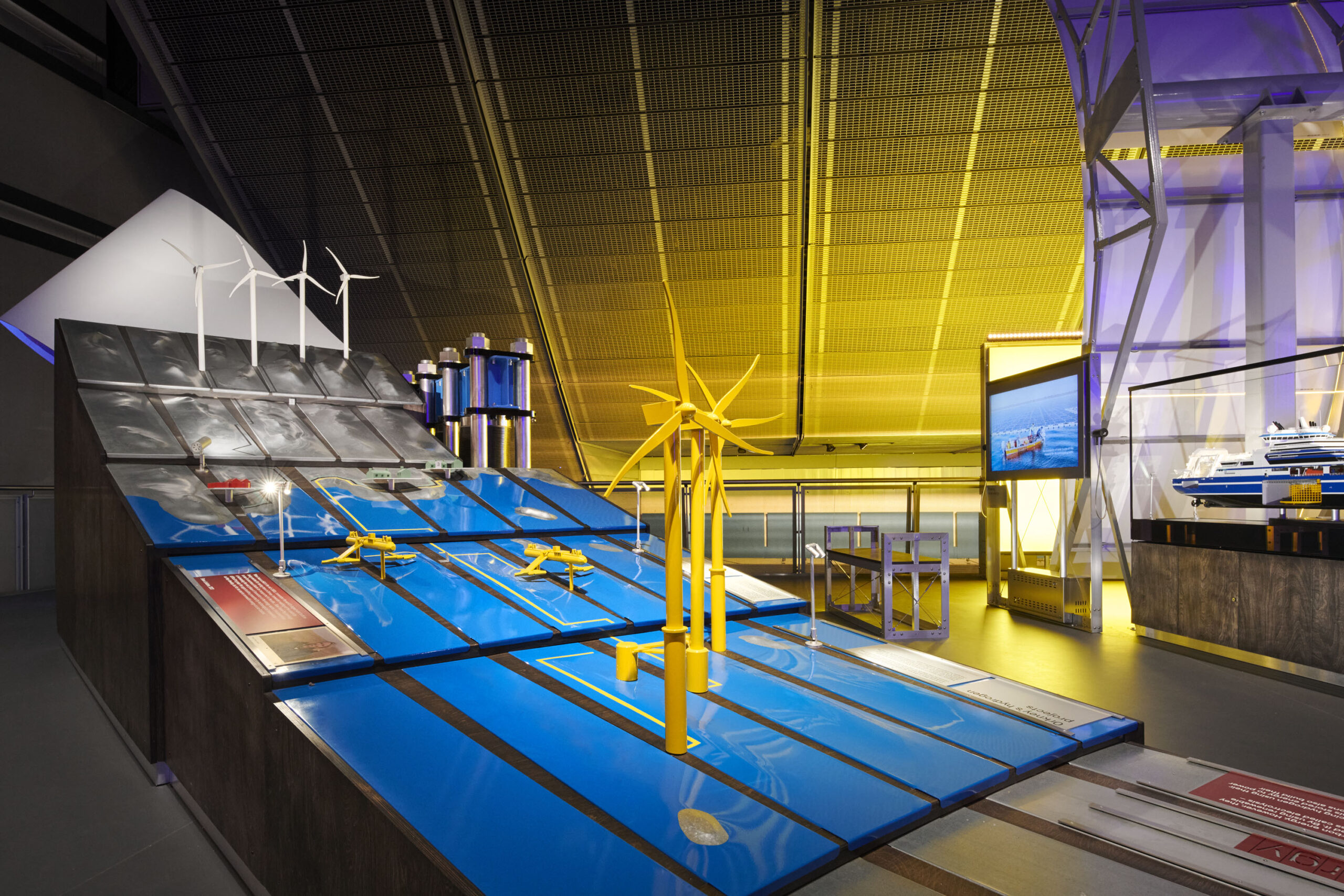This week the Science Museum opened a stunning new gallery exploring what is probably the most important question of our age: how can the world limit dangerous climate change by transitioning away from fossil fuels in meeting global energy needs?
Fossil fuels still meet around 80% of the world’s energy needs. That is why the rapid but carefully managed shift to a low-carbon economy based largely on renewable energy can fairly be described as an Energy Revolution. It’s how our curators describe it in the title of the new gallery.
Engaging the public in discussion about the quickest, fairest and most effective way for the world to achieve this transition is a top priority for the five museums that make up the Science Museum Group. It’s exemplified in this new gallery but informs many other aspects of our work. That includes blog posts, exhibitions and our excellent series of Climate Talks discussions which you can find online.

There are some remarkable objects in Energy Revolution: The Adani Green Energy Gallery selected by our curators – alongside a suite of digital exhibits – to help visitors examine how the past, present and future of energy systems are shaped by human imagination and innovation. We all have a role to play in shaping our low-carbon energy future. We hope that the new gallery will make everyone who visits think about the complex issues it raises and perhaps even inspire them to do their bit.
Given the rapid development of electric vehicles in recent years, I have been particularly taken with the story behind one of the older items in the gallery, the Bersey Electric Cab. It first took to the streets of London in 1897 but disappeared from the roads just two years later. It’s hard not to wonder what the world might look like had this technology taken off a hundred years earlier than it did.

While around half of the stories come from the UK, the gallery is global in scope. As we think about a fair energy transition, we need to reflect on the reality that the impacts of climate change are felt unevenly around the globe, and that energy consumption is also very uneven. Much of the biggest growth in consumption is in developing countries where hundreds of millions of people have only gained access to electricity for the first time in the past decade.
The gallery’s curators have done a superb job, drawing on our vast collection of objects, on extensive research and on the advice of a panel of expert, independent advisors. Given that some people have raised concerns about the gallery’s sponsor, the major Indian renewable energy company Adani Green Energy, I should make it clear that the gallery was created without any interference from the sponsor whatsoever. What they did provide was a significant sum of money that allowed us to build the new gallery despite the financial constraints we are working under. For that we are extremely grateful. They have enabled us to present this gallery to the public.
According to the International Energy Agency (IEA), India is ‘poised to see the largest energy demand growth of any country in the world over the next three decades, as industrialisation and urbanisation surge and per capita income rises sharply’. So the rapid growth of India’s renewables sector is vital, particularly given that coal currently supplies much of the country’s electricity. That is the problem Adani Green Energy has set out to tackle. That is why we are keen to work with them.

I should also point out that in other cases the Science Museum Group has accepted sponsorship from some companies such as BP and Equinor that are directly involved in fossil fuel extraction. Clearly large energy companies have been part of creating the problem of climate change, so they MUST help in finding solutions. They have the resources to make the transition happen. We believe that it is right to engage with these companies if they demonstrate commitment to the development of renewable energy at scale and have plans that align with the Paris goals to limit global warming to around 1.5 degrees Celsius above pre-industrial levels by 2050.
We use a tool called the Transition Pathway Initiative (TPI) to assess the progress of our sponsoring partners. Using publicly disclosed data, TPI assesses the progress companies are making on the transition to a low-carbon economy, supporting efforts to mitigate climate change. The TPI tool is easily accessible and this level of transparency was one of the reasons we choose to use benchmarks from it to guide our decisions on who to work with. We also use it to encourage partners in carbon intensive industries to go further and faster in the energy transition. If an organisation fails to meet its commitments under TPI we will engage with it and encourage it do better. If that engagement proves unsuccessful, we would at an appropriate moment disengage from them.
We hope that the public will visit and enjoy the new gallery and make up their own minds on the issues which it explores. It gives a thorough picture of how humankind has produced energy in the past and present; and it analyses the options for producing energy in the future. We are in the middle of a revolution in energy production. This gallery will help people make sense of it and will inspire them to be part of it.
The post The Energy Revolution we need to see appeared first on Science Museum Blog.
